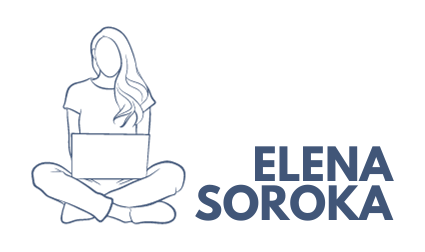This blog post will not be a simple reflection in action – but almost a confession. Confession of blogging with dyslexia. I would share a workflow that helps me overcome my fear and insecurity about writing. I also want to motivate every person with dyslexia who thinks they are only half a person because of their disorder.
Dyslexia
Dyslexia is a learning disorder that makes people extremely weak in expressing themselves. Mostly it comes from the inability to combine comprehensive logic flow in verbal communication. People with dyslexia have difficulties in writing as well as in reading. The main reason is a challenge in letter recognition. Important to mention that dyslexia is not collected to intelligence. Many successful people who changed the world had severe dyslexia—for example, Robin Williams or Albert Einstein. Therefore, dyslexia is a disorder and not a disease.
“ poorly organized written work that lacks expression (for example, even though they may be very knowledgeable about a certain subject, they may have problems expressing that knowledge in writing) “
My disorder is not a disease!
My blog is a requirement of my master’s program in Content Strategy. Otherwise, I swear I would never have the courage to open a blog. I have dyslexia and sometimes have difficulties expressing myself verbally and written.
DIS-order is a great term for dyslexia because I have knowledge and ideas, but all of them are in a small mess. My brain is much more adequate in creativity and talents, but it turned down every time I needed to write, read, and talk. In the paragraphs below, I will show you two technics that help me improve my writing and overcome dyslexia.
How to structure messy ideas as an academician
I tried different tactics when it came to blogging. The one that perfectly works is an academic writing style. You decide on the “Research question” or “Topic” and prepare an outline for your written content. I use this technique when I have a strict topic to discuss. The outline creates a skeleton for my ideas. This frame helps me stick to the topic and be focused.
- Decide on the title
- Decide on the length
- Choose topics that will help you make a logical flow
- Distribute them to the paragraphs
- Write Inspiring conclusion
- Check if the content is easily readable
- Re-read and check for the mistakes
Freestyle writing to enjoy a moment.
Another technique that I use when I write my blogs is freestyle. I imagine myself as a journalist. I want to know how journalists create their pieces of written art, but I imagine it mainly as a pianist playing a melody. The fingers jump from letter to letter on the keyboard; in the end, smooth and comprehensive content is born. I do it likewise. What to do when knowledge inspires you, and you get an AHA moment?
- Start to write all that you have in mind. No paragraphs. Put all your ideas on “paper
- Read and correct the mistake
- Reduce all information that is not important /make sentences/easily readable
- Reorder the paragraph to make it sounds like great storytelling
- Give a title to paragraphs
- Name a Blog Post
Rounds of constructive critics
Of course, I overlook mistakes even though I use Grammarly to proofread all my writings. For example, the “word “can be written as “world,” and I will never recognize it. I call bones – stones. And this magic disorder happens in all three languages I use daily.
My old sister is my lifesaver. She is the one who reads all my works and gives constructive criticism. She never says I do not like it or that. She always says exactly what went wrong. In which line, in which paragraph, things went wrong.
She worked for years in the T.V. archive and has a much stronger ability to construct a solid piece of written content. Mostly, I pass two rounds of constructive criticism from my sister, and then the blog post goes live. The initial articles have, on average, 50% of the content that I wrote in the first draft. But the results are always better than I could expect.
Dyslexia is not only about “ability.” Dyslexia is only a disorder that overcomes with online tools and people who support you. With years of practice and willingness become better. I continue to write my blog post, I am doing my master’s degree by myself, and I plan to inspire others with dyslexia to do what they want.



